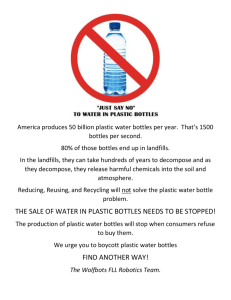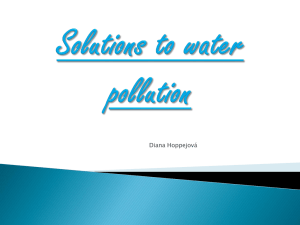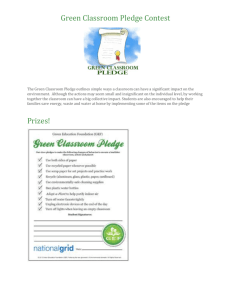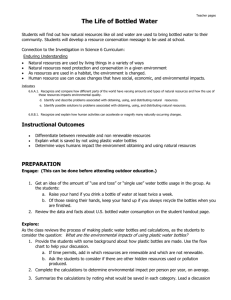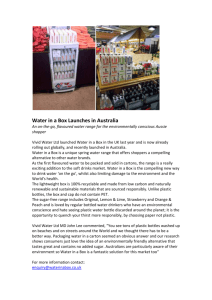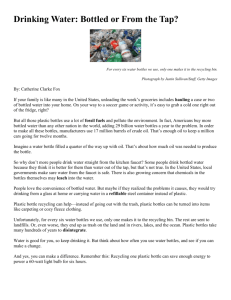Emma Collins
advertisement
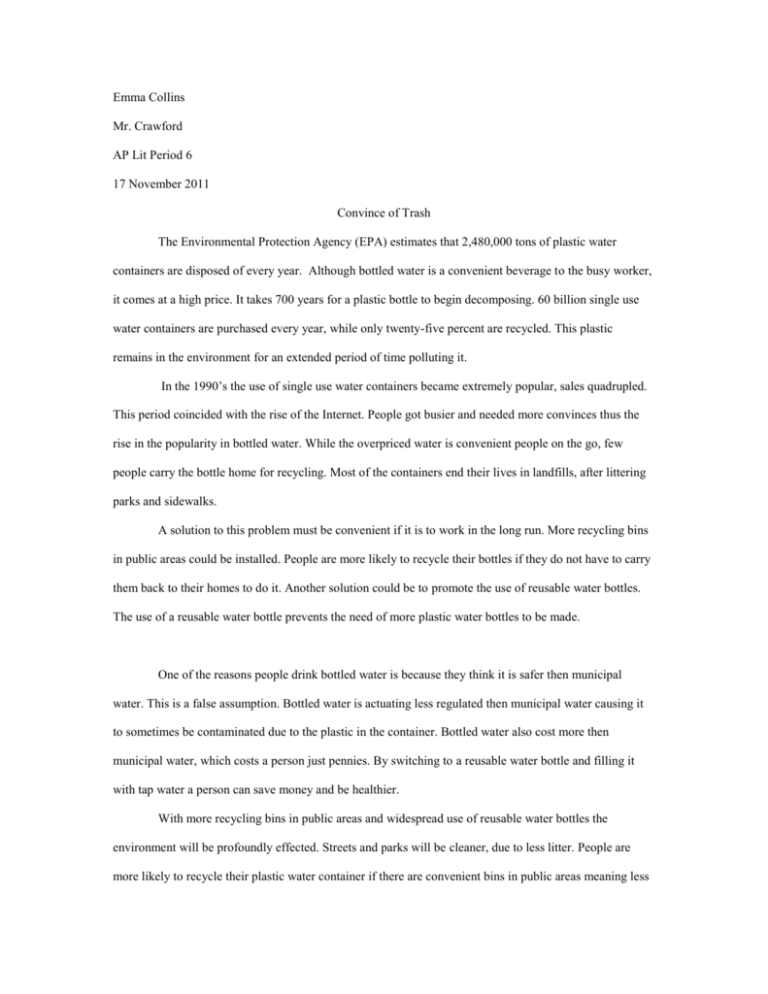
Emma Collins Mr. Crawford AP Lit Period 6 17 November 2011 Convince of Trash The Environmental Protection Agency (EPA) estimates that 2,480,000 tons of plastic water containers are disposed of every year. Although bottled water is a convenient beverage to the busy worker, it comes at a high price. It takes 700 years for a plastic bottle to begin decomposing. 60 billion single use water containers are purchased every year, while only twenty-five percent are recycled. This plastic remains in the environment for an extended period of time polluting it. In the 1990’s the use of single use water containers became extremely popular, sales quadrupled. This period coincided with the rise of the Internet. People got busier and needed more convinces thus the rise in the popularity in bottled water. While the overpriced water is convenient people on the go, few people carry the bottle home for recycling. Most of the containers end their lives in landfills, after littering parks and sidewalks. A solution to this problem must be convenient if it is to work in the long run. More recycling bins in public areas could be installed. People are more likely to recycle their bottles if they do not have to carry them back to their homes to do it. Another solution could be to promote the use of reusable water bottles. The use of a reusable water bottle prevents the need of more plastic water bottles to be made. One of the reasons people drink bottled water is because they think it is safer then municipal water. This is a false assumption. Bottled water is actuating less regulated then municipal water causing it to sometimes be contaminated due to the plastic in the container. Bottled water also cost more then municipal water, which costs a person just pennies. By switching to a reusable water bottle and filling it with tap water a person can save money and be healthier. With more recycling bins in public areas and widespread use of reusable water bottles the environment will be profoundly effected. Streets and parks will be cleaner, due to less litter. People are more likely to recycle their plastic water container if there are convenient bins in public areas meaning less bottles on the ground and in landfills. Since plastic dose not biodegrade, they photodegrade, they contaminate soil and waterways. With less in landfills, and in forests as litter soil will have an easier time. It is easy to tell other to take action, but harder to do so for one’s self. On the issue of single use water containers I can be part of the solution by taking action. In the short term I could cut back on my use of plastic water bottles to only when I need them, and recycle them when I use them. Another thing I could do to help out by picking up bottles I see lying around the campus after lunch. Students often discard their bottles not thinking about the harm it does for the environment. In order to help fix the problem in the long run I could education my friends on the problem. The more people know, the more they can do to help to fix it. Drinking out of a plastic water bottle is convenient, no thinks about how it effects the environment. Often times we just it aside into the trash not really caring where it goes. Every square mile of the ocean contains 46,000 pieces of floating plastic in it. Worldwide ten percent of plastic produced every year finds its way into the ocean, seventy percent of that which finds its way onto the ocean floor, which never degrades according to the UN in 2006. Our convinces are littering the ocean destroying an ecosystem when a solution is already available: recycling.

